The War Elephant Through History
One of the most interesting and unusual uses of domesticated animals in history was the use of war elephants, which probably first began around 4,000 BCE in the Indus River Valley. From that point, the largest land mammals in the animal kingdom were used in many battles including against Alexander the Great's forces, by Hannibal's Carthaginian army against the Romans and by the Sultans of India when fighting the Mongols. Working with animals on the battlefield had both advantages and disadvantages and this was particularly true of the war elephant, whose use on the field of battle down the ages has had varying degrees of success. The Advantages of Using War Elephants
The Disadvantages of Using War Elephants
Alexander the Great
Alexander the Great came up against war elephants in 326 BCE at the Battle of the Hydaspes (depicted above) when he fought against the forces of Porus in the Indus Valley region. Porus had around three hundred of the beasts at his disposal however, this did not help him gain victory against the Macedonian forces. The Greek archers were able to kill many of the drivers and wound the animals which caused mayhem in the ranks of the Indian army as the elephants ran wild.
Hannibal of Carthage
Timur Khan – Leader of the Mongol Hoards
The End of the Use of Elephants in War
The Advantages of Using War Elephants 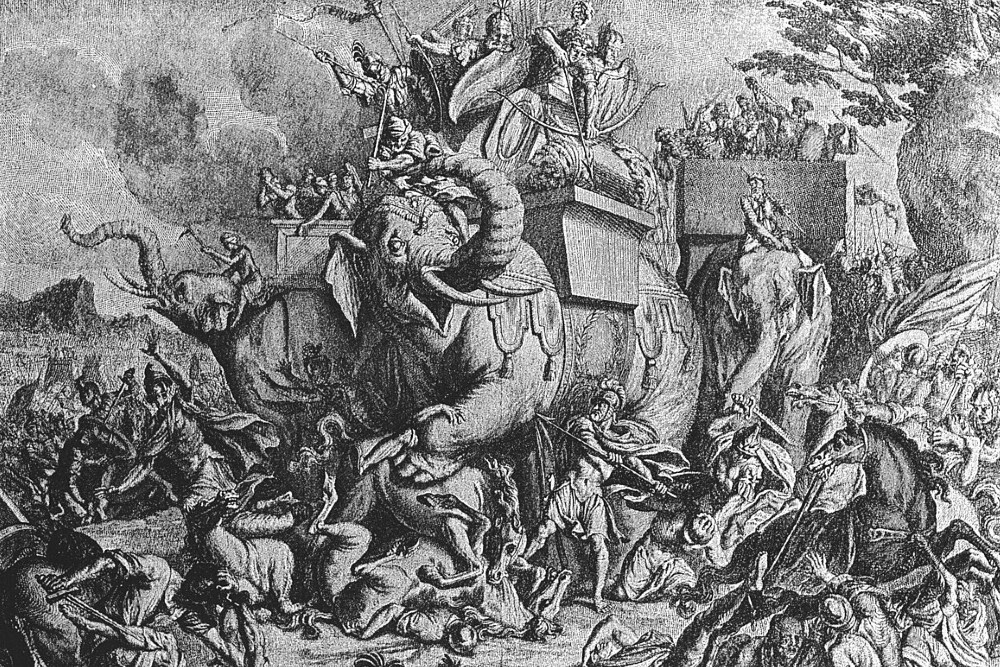
Probably the biggest advantage of using elephants in battle was the terror caused in the opposing army’s ranks when they saw the giants stampeding towards them at speeds that could exceed 25 KPH (15.5 MPH). Sometimes more than a hundred would be used, not only potentially routing the men who may never have seen such beasts before, but horses unaccustomed to them would also be frightened, which could cause chaos in the ranks.
In Asia and the Middle East, fighting towers were put on the backs of the elephants and occupied by an officer, an archer and an infantryman armed with a lance (depicted above). Working with the animals in this manor gave a great height advantage, allowing the infantryman to bear down on the enemy and the archer to greatly increase his range.
Added to this, in-between battles the elephants were used to carry heavy loads of equipment and supplies, making prolonged campaigns easier to execute as more food and other vital resources could be taken on a campaign.
The Disadvantages of Using War Elephants 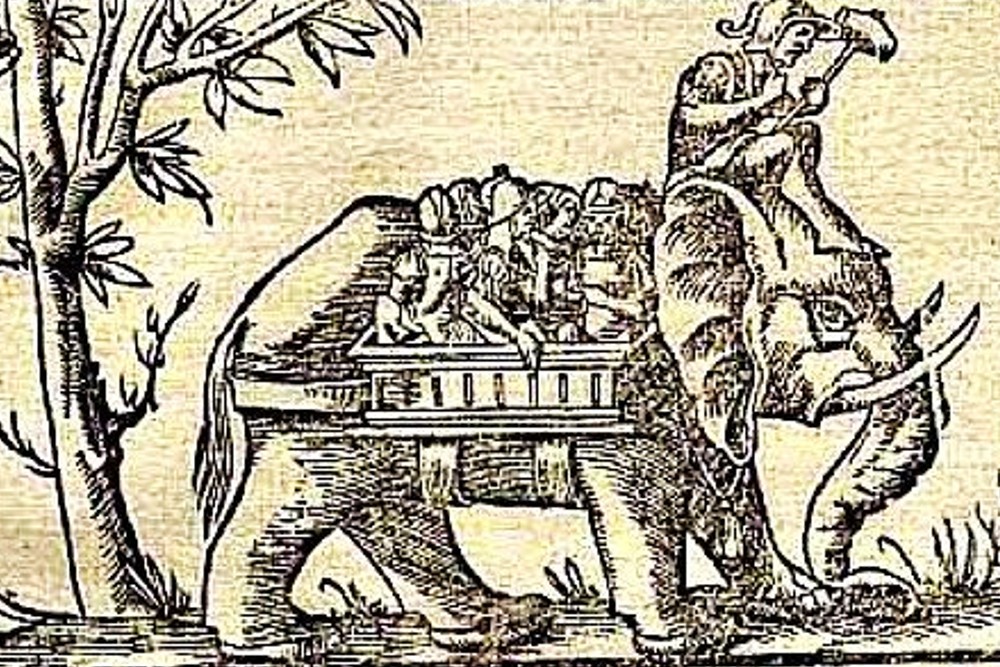
While the use of war elephants was often very beneficial, it also brought with it risks for an army employing them and when things went wrong, the results could be dire. During a battle, they could easily be wounded by iron spikes that were either in heavy wooden frames or wound through chains and if they caused the animal to fall, it could potentially crush any soldier unfortunate enough to be too close.
In modern warfare, the equivalent to working with these animals could be said to be the use of armoured vehicles however when they get damaged, they tend to just stop. These ‘weapons’ from the animal kingdom on the other hand are a different story and when an elephant was injured or lost its driver, it would often become uncontrollable. They could end up killing or wounding large numbers of men from the ranks they were supposed to be helping, indiscriminately trampling on anyone who got in their way.
Sometimes, riders would carry a large hammer and a chisel-type tool to kill the animal if it appeared that it might lose control; the chisel would be driven into a point on the back of the head, stopping the elephant in its tracks before it could run amok (depicted above).
Alexander the Great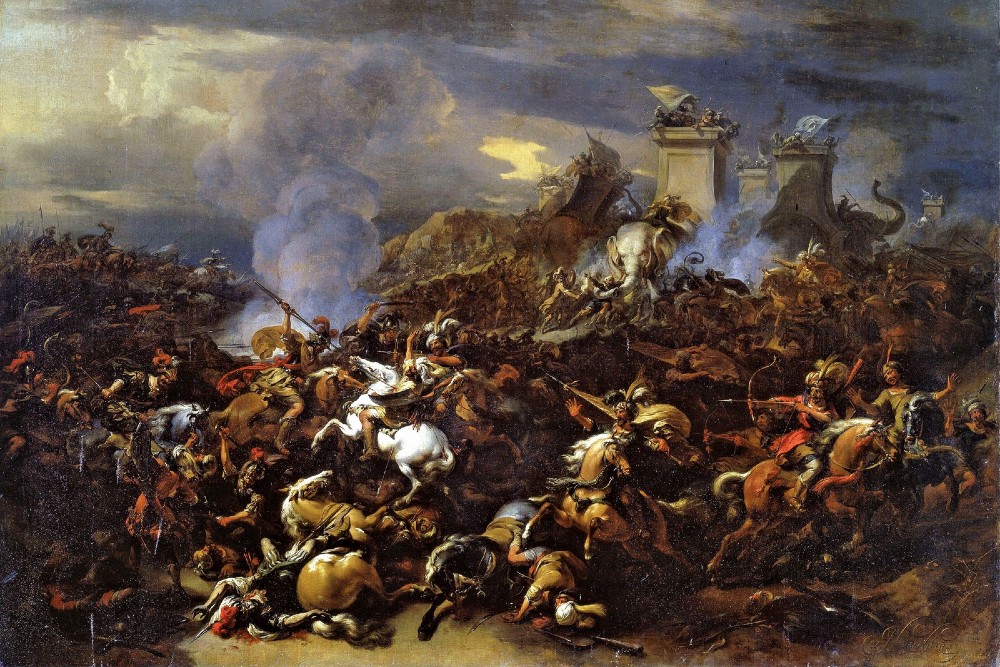
Alexander the Great came up against war elephants in 326 BCE at the Battle of the Hydaspes (depicted above) when he fought against the forces of Porus in the Indus Valley region. Porus had around three hundred of the beasts at his disposal however, this did not help him gain victory against the Macedonian forces. The Greek archers were able to kill many of the drivers and wound the animals which caused mayhem in the ranks of the Indian army as the elephants ran wild. Despite the tendencies of elephants to sometimes rout, they are very intelligent and could be trained relatively well. An early description of the war elephant as used in this battle is handed down to us from the Greek historian Plutarch (c. 46 – 120 CE), who stated in his work
The Life of Alexander:
Most historians agree that Porus was four cubits [the distance between the elbow and the tip of the middle finger] and a span [half a cubit] high and that the size and majesty of his body made his elephant seem as fitting a mount for him as a horse for the horseman.
And yet his elephant was of the largest size and it showed remarkable intelligence and solicitude for the king, bravely defending him and beating back his assailants while he was still in full vigour, and when it perceived that its master was worn out with a multitude of missiles and wounds, fearing he should fall off, it knelt softly on the ground, and with its proboscis gently took each spear and drew it out of his body.
Hannibal of Carthage 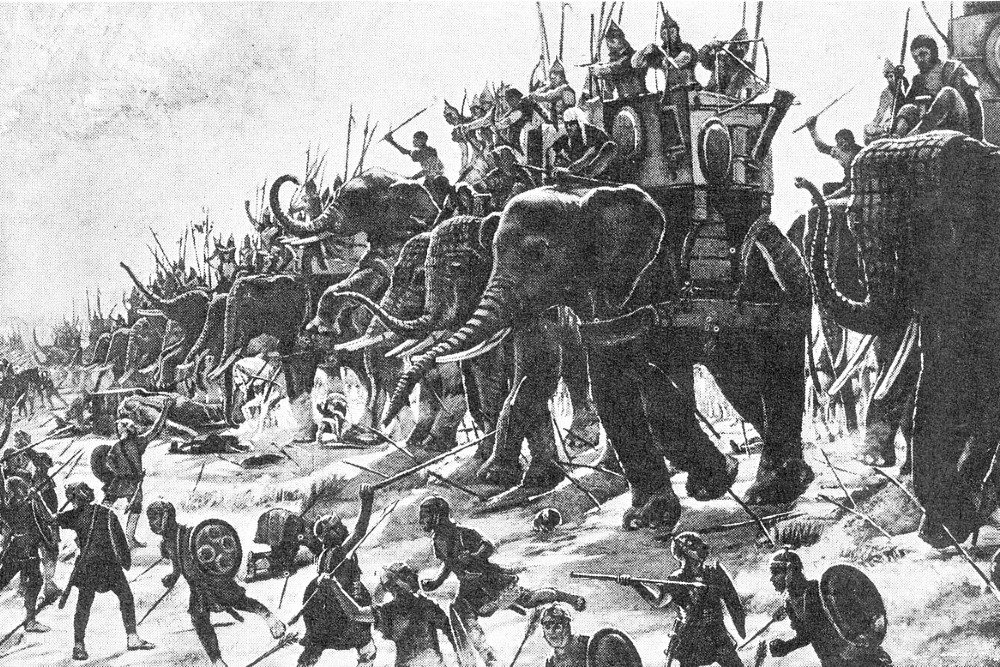
Perhaps the most famous use of the war elephant was by Hannibal and his Carthaginian army against the Romans during the Second Punic War (218 – 202 BCE). However, how much he relied on them tends to be exaggerated as most of his elephants died during the crossing of the Alps.
He was able to replace many of them but they still only really played an important part in one battle, the Battle of the Trebia River.
By the time the two forces faced each other in their final conflict, the Battle of Zama (depicted above), the Romans had learned to herd the animals through their ranks by simply making a path for them and steering them through it, therefore nullifying any threat they posed.
Timur Khan – Leader of the Mongol Hoards 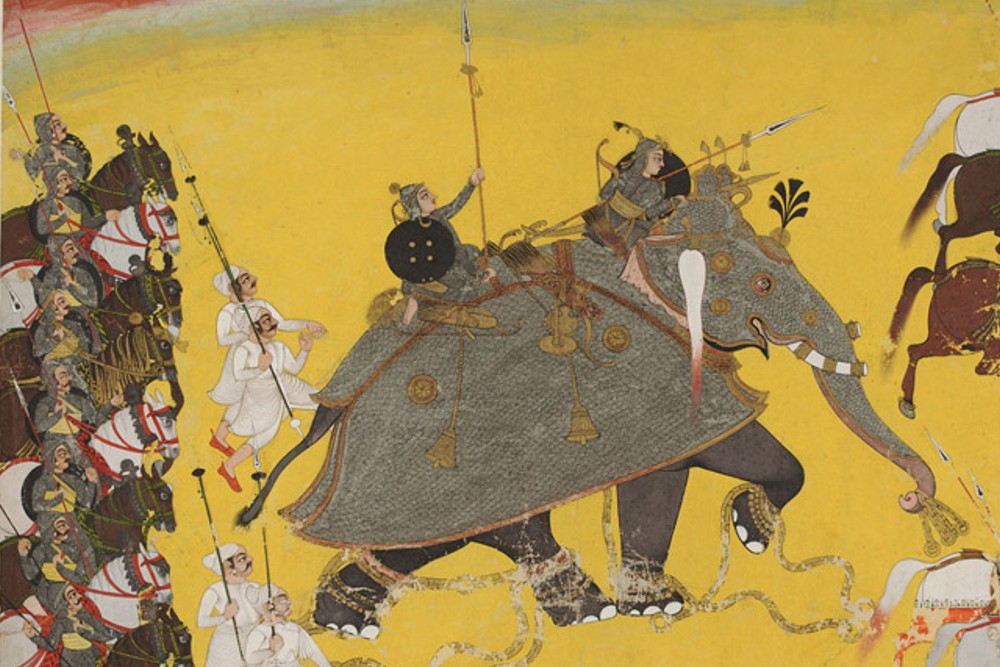
The Delhi Sultanate used war elephants against the Mongol hoards led by Timur Khan in 1398 however, the Indian forces were defeated. It is unknown exactly how Timur managed to solve the problems caused by the one hundred and twenty elephants he encountered though one legend states that he attached straw to his camels so that when the giant beasts got close, he could set the straw on fire. This caused the flaming camels to run forward which, so the story goes, panicked the elephants causing them to crush many of the Indian soldiers.
Whatever method he used to get passed the problem, they must have had some good effect earlier in the conflict. We can surmise this as Timur was so impressed with the elephant’s potential usefulness that he later obtained some for his own army and used them successfully in later battles against the Mamluks and the Ottomans.
The End of the Use of Elephants in War 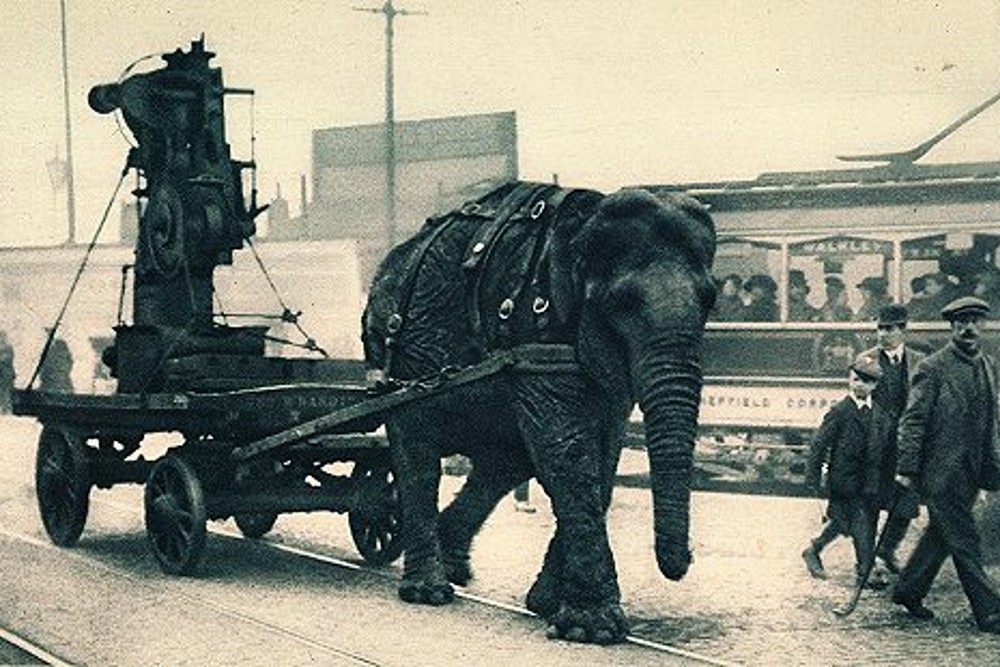
From the sixteenth century, the use of gunpowder in battle made it considerably easier to bring down the animals, diminishing their effectiveness and bringing an end to their use on the battlefield. However, they continued to be used for transportation and logistics in warfare in the First World War (as seen above) and through to the Second World War, when they were used by Indian and Burma forces to transport guns and supplies.
They also assisted in engineering projects such as road and bridge building in remote areas where vehicles could not be used but by the end of the conflict, technology had advanced to the point where the use of the war elephant was no longer required.
Written by Andrew Griffiths – Last updated 12/05/2023. Please visit my Sample Page or go to my passion project, The History of Fighting, for more examples of my writing.
To get history articles like this on your site, please feel free to contact me for a consultation.
References:
Alexander of Macedonia. [Internet]. 2012. San José State University. Available from: http://www.sjsu.edu/faculty/watkins/alexandergreat.htm [Accessed July 22, 2013].
Chesser, P. [Internet]. 2002. Ancient Battle Tanks. Ohio State University. Available from: http://ehistory.osu.edu/world/articles/ArticleView.cfm?AID=2 [Accessed July 22, 2013].
Elephant Pulling a Field Gun, Indian Mutiny, 1858. [Internet]. 2012. National Army Museum. Available from: http://www.nam.ac.uk/online-collection/detail.php?acc=1956-08-6-17 [Accessed July 22, 2013].
Thayer, B. (Editor). [Internet]. 2007. Plutarch, The Parallel Lives - The Life of Alexander. University of Chicago. Available from: http://penelope.uchicago.edu/Thayer/E/Roman/Texts/Plutarch/Lives/Alexander*/8.html [Accessed July 22, 2013].
The Elephant in Rome. [Internet]. 2023. University of Chicago. Available from: https://penelope.uchicago.edu/~grout/encyclopaedia_romana/gladiators/elephantus.html [Accessed May 05, 2023].
War Elephants. [Internet]. 1998. The University of Calgary. Available from: http://www.ucalgary.ca/applied_history/tutor/islam/mongols/elephants.html [Accessed July 22, 2013].
War Elephant Quote
Elephants, when tamed, are employed in war, and carry into the ranks of the enemy towers filled with armed men.
And on them, in a very great measure, depends the ultimate result of the battles that are fought in the East.
They tread under foot whole companies, and crush the men in their armour.
~ Pliny the Elder (77 CE) ~
